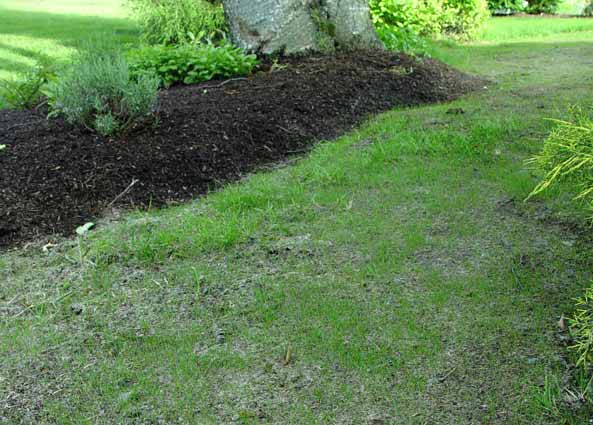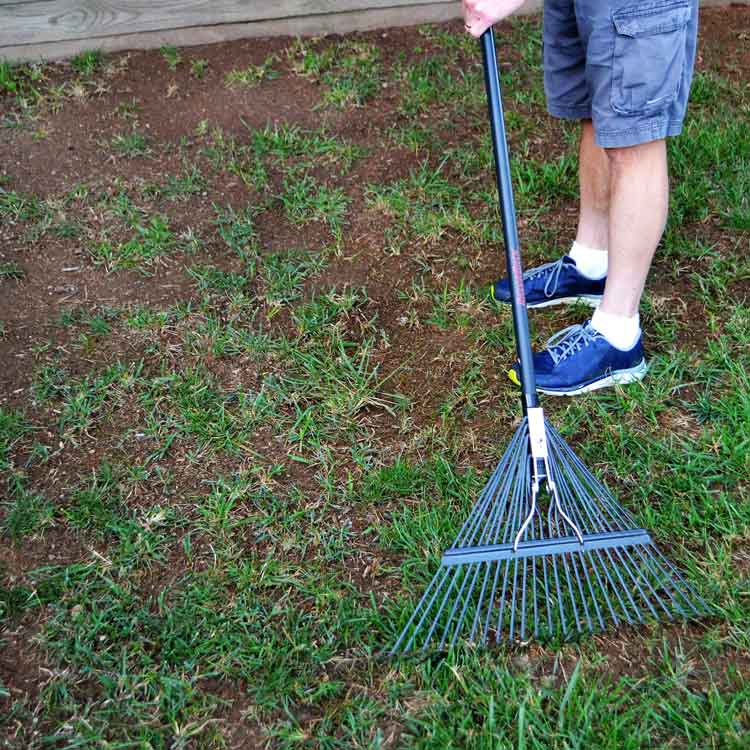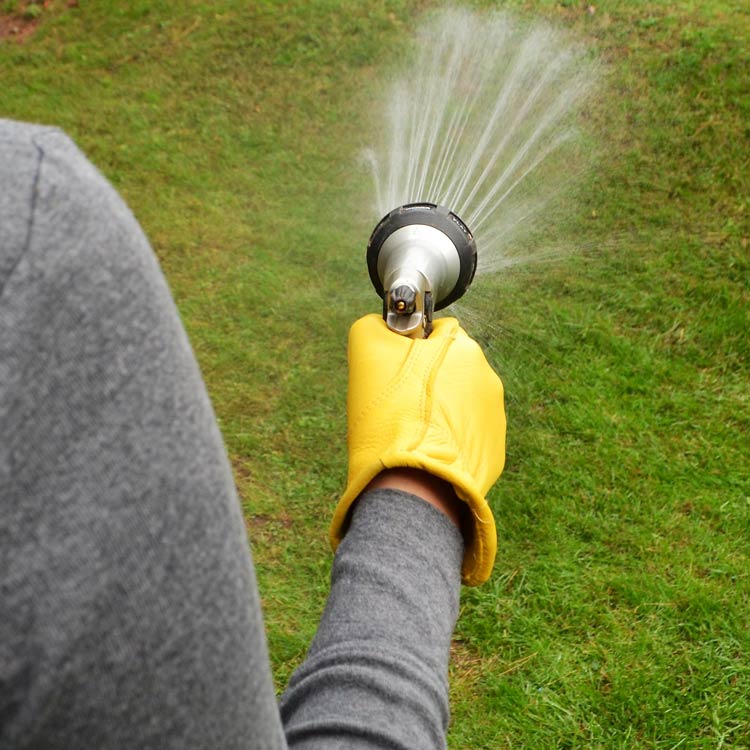 Water overseeded areas once or twice a day until the new seed has germinated.
Water overseeded areas once or twice a day until the new seed has germinated.
George Weigel
If you’re struggling with weeds in the lawn, your grass probably isn’t as dense as it should be. In other words, it’s “thin.” Thin lawns allow weed seeds to take hold and once they gain a foothold, they can creep and sprawl their way to domination. “Overseeding” the lawn, which involves adding new seed to an existing lawn, helps thicken the lawn to eliminate the spaces where weeds can take hold. Early spring and early fall are the two best times to overseed a lawn.
Follow these steps to properly overseed your thin lawn areas:
 Loosen the soil within existing lawn with stiff-tined leaf or garden rake.
Loosen the soil within existing lawn with stiff-tined leaf or garden rake.
 Keep the newly seeded lawn areas, consistently damp while seed germinates.
Keep the newly seeded lawn areas, consistently damp while seed germinates.
Prepare the area. First, clear the area to be overseeded, removing rocks, sticks or other debris. Then cut the existing lawn short – to about one-half to one inch.
Loosen the soil. Grass seed won’t sprout well if you just toss it on top of compacted soil. Rough up the soil surface with a stiff-tined leaf rake, garden rake or claw- type cultivar. For large areas, consider renting a power tool, such as a dethatcher that roughs up the soil surface with fine tines.
Choose quality grass seed. Different grass species perform better in some areas than others so it’s worth the effort to first do some research. Are you trying to match your existing lawn type? Do you want the lawn to be green while your southern grass is in dormancy? Will it be used in a shady or sunny area? Will it be in a high-traffic area? The answers to these simple questions will point you to different grass types for overseeding. Look for pure, weed-free, grass seeds like those from GreenView Fairway Formula versus coated grass seed as you’ll pay less for more coverage and be guaranteed a quality product.
Sow the seed. Scatter seed by hand in small areas or use a broadcast spreader if the area is larger. The goal is to distribute the seed evenly and moderately – approximately 16 seeds per square inch. Next, lightly rake so that the seed is distributed within the top quarter-inch of the loosened soil and then lightly tamp the soil to enhance seed-to-soil contact.
Fertilize after overseeding with a fertilizer for new grass, such as GreenView Starter Fertilizer with GreenSmart. If you have large open areas that have been overseeded, consider protecting the seed while it germinates with a combination seeding mulch and fertilizer products, such as GreenView Fairway Formula Seeding Success. It will ensure your seed gets off to a great start and fully biodegrade into the soil for no cleanup.
Water. Keeping the seeded ground consistently damp near the surface while the seed germinates is probably the most important step to ensure success. It’s important to keep the young, shallow roots of the newly forming grass plants from drying and dying. Figure on daily watering and possibly twice daily watering until new grass is two inches high. Then cut back to every other day or whenever the surface goes dry for the first season.